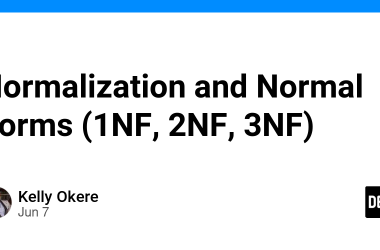Become a SQL Scientist: Explore Every Layer of Table Metadata in SQL Server
“If you want to master SQL Server, you must see your database like a scientist views the universe — layer by layer, structure by structure, interaction by interaction.”
In this blog post, I’ll walk you through five levels of understanding a table in SQL Server — from the basic structure to expert metadata. These techniques will help you write better queries, understand your schema’s architecture, and build tooling that empowers your team.
Let’s dive into the anatomy of a table like never before.
Level 1: BASIC — Column Structure & Defaults
SELECT
COLUMN_NAME,
DATA_TYPE,
CHARACTER_MAXIMUM_LENGTH,
IS_NULLABLE,
COLUMN_DEFAULT
FROM INFORMATION_SCHEMA.COLUMNS
WHERE TABLE_NAME = 'YourTable';
Use this to explore:
- Column names and types
- Max length for strings
- Default values and nullability
Level 2: MEDIUM — Indexes, Keys, and Foreign Relationships
Indexes
SELECT
ind.name AS IndexName,
ind.type_desc AS IndexType,
col.name AS ColumnName,
ic.is_included_column,
ind.is_unique,
ind.is_primary_key
FROM sys.indexes ind
INNER JOIN sys.index_columns ic ON ind.object_id = ic.object_id AND ind.index_id = ic.index_id
INNER JOIN sys.columns col ON ic.object_id = col.object_id AND ic.column_id = col.column_id
WHERE ind.object_id = OBJECT_ID('YourTable');
Constraints (Primary, Unique)
SELECT
kc.name AS ConstraintName,
c.name AS ColumnName,
kc.type_desc
FROM sys.key_constraints kc
JOIN sys.index_columns ic ON kc.parent_object_id = ic.object_id AND kc.unique_index_id = ic.index_id
JOIN sys.columns c ON c.object_id = ic.object_id AND c.column_id = ic.column_id
WHERE kc.parent_object_id = OBJECT_ID('YourTable');
Foreign Keys
EXEC sp_helpconstraint 'YourTable';
Level 3: ADVANCED — Triggers, Dependencies, Statistics
Triggers on the table
SELECT name, is_disabled, create_date
FROM sys.triggers
WHERE parent_id = OBJECT_ID('YourTable');
Optimizer statistics
SELECT *
FROM sys.stats
WHERE object_id = OBJECT_ID('YourTable');
Dependencies (What depends on this table)
SELECT referencing_schema_name, referencing_entity_name, referencing_class_desc
FROM sys.dm_sql_referencing_entities ('dbo.YourTable', 'OBJECT');
Reverse dependencies (What this table depends on)
SELECT referenced_schema_name, referenced_entity_name, referenced_class_desc
FROM sys.dm_sql_referenced_entities ('dbo.YourTable', 'OBJECT');
Estimated Row Count
SELECT SUM(row_count) AS ApproxRowCount
FROM sys.dm_db_partition_stats
WHERE object_id = OBJECT_ID('YourTable') AND index_id IN (0,1);
Level 4: EXPERT — Storage, Compression, and Permissions
Filegroup and storage
SELECT t.name AS TableName,
i.name AS IndexName,
f.name AS Filegroup
FROM sys.tables t
JOIN sys.indexes i ON t.object_id = i.object_id
JOIN sys.filegroups f ON i.data_space_id = f.data_space_id
WHERE t.name = 'YourTable';
Permissions granted on table
SELECT
princ.name AS Principal,
perm.permission_name,
perm.state_desc
FROM sys.database_permissions perm
JOIN sys.objects obj ON perm.major_id = obj.object_id
JOIN sys.database_principals princ ON perm.grantee_principal_id = princ.principal_id
WHERE obj.name = 'YourTable';
Compression and partitioning info
SELECT
ps.partition_number,
ps.row_count,
ps.data_compression_desc
FROM sys.partitions ps
WHERE ps.object_id = OBJECT_ID('YourTable');
Level 5: MASTER SCIENTIST — Build a Table Metadata Dashboard
What if you could run one stored procedure and get everything?
💡 Example Dashboard Procedure
EXEC sp_AnalyzeTableMetadata @TableName = 'YourTable';
(See this blog post for the full procedure code.)
This approach gives you a 360° view of any table — ready for audits, analysis, migrations, or onboarding new developers.
Summary: Tiered Metadata Mastery
| Level | Focus Area | Key Views / Queries |
|---|---|---|
| Basic | Columns, Types, Defaults | INFORMATION_SCHEMA.COLUMNS |
| Medium | Indexes, Keys, FK | sys.indexes, sys.key_constraints |
| Advanced | Dependencies, Triggers, Statistics | sys.dm_sql_*, sys.stats |
| Expert | Storage, Permissions, Partitioning | sys.filegroups, sys.permissions |
| Master | Unified Procedure Dashboard | Custom Stored Procedure |
SQL Is Art and Science
Don’t just query your data — understand it.
See tables as organisms in a larger ecosystem. Analyze them with curiosity. Explore their relationships. Trace their history. Only then will you not just use SQL — you’ll master it.
SQL is your microscope. Your schema is the specimen. Explore it.
✍️ Written by: Cristian Sifuentes – Full-stack dev crafting scalable apps with [NET – Azure], [Angular – React], Git, SQL & extensions. Clean code, dark themes, atomic commits
#sqlserver #databases #sql #devtools #metadata #observability #dataarchitecture






